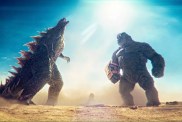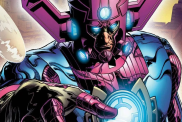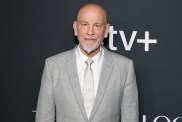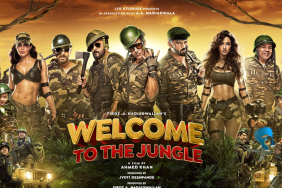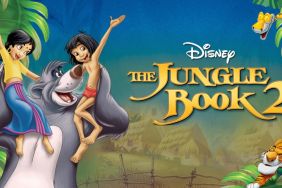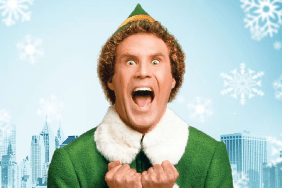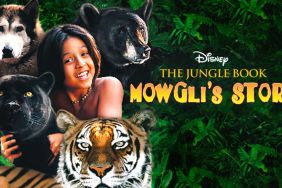When Disney decided to do a live-action version of their 1967 animated film The Jungle Book (based on the 1894 novel by Rudyard Kipling), it was a big challenge. Director Jon Favreau had a huge task, taking the beloved story and using effects to create Kipling’s world with a single human actor, a child, no less. The film was released to critical praise and it was recently announced that not only will Favreau be doing a sequel to the film, but that he’ll also do a live-action version of the 1994 animated film, The Lion King.
ComingSoon.net got a chance to speak to Favreau about the technology used in the film, finding the right kid for the role of Mowgli, how they got him into the role with puppets and jungle gyms, and changing the environmental message of the story. We also spoke to VFX Supervisor Rob Legato about creating a world that isn’t too perfect, and why that’s the best way to handle digital storytelling.
We asked Favreau how this was pitched to him when it all started. He said, “I has just done ‘Chef,’ and ‘Chef’ came on the heels of doing two Marvel movies, and then ‘Cowboys & Aliens,’ so I had done a lot of that. Also, the Marvel Universe was really underway, and I felt like I really made my mark and I was a part of the beginning of that, so that’s very satisfying to see that continuing on, and you feel like the work you did on those movies – the baton is being passed.”
He said he wasn’t originally in the mindset of jumping back into big effects movies, especially after spending time with the same characters in Iron Man and Iron Man 2. “But them they called me about ‘Jungle Book.’ I thought, I loved the original. I don’t know what I’d do with live-action with [the film]. It sounds like a very challenging project to be filming in the jungle, and what do you do about the animals? You’re dealing with a young actor, and there is only one human character in it. I didn’t understand how to wrap my head around it.”
He said he went into the meeting and that Alan Horn [Chairman of The Walt Disney Studios] who was passionate about the project, explaining that this was the visual successor to the effects of Life of Pi and Avatar. Favreau said he loved the idea of using action movie technology in a heartwarming human story. He said that the effects he’d used before were with metal and hard surfaces, but this time it was going to be fur and soft lines. “To have something feel like it was created by nature and not machinery, that was much more ambitious.”

Legato talked about his work in visual effects, saying that it’s just like any other artifice in film. “Costumes aren’t real. Actors aren’t real. Sets aren’t real. Everything is fabricated, so why is visual effects separated from that portion of it? It’s just another tool of filmmaking.” He told us that his goal with this film was to make it seem like it could have been shot in nature. He said that it was important to make sure things didn’t look too perfect, because today’s sophisticated audiences can tell that “too perfect” means CGI. “You want to make it feel like a live-action cameraman shot it and lit it the way he’d light a real thing. Make it feel like it fits into the fabric of the film.”
RELATED: Jon Favreau to Use VR Tech for Live-Action Lion King
He explained further, saying, “If, here’s the button that makes it look 1000% great, and here’s the button that makes it look good, I want the ‘good’ one. The other is too far, pushing the envelope, where it’s so good that it isn’t real. It gives itself away. Like somebody wearing a costume that’s brand new, but it’s supposed to be aged. It just doesn’t feel right.” He added that he’d often move light around to simulate the difficulties that live-action films have, shooting at different times of the day to get the real-life feel, as well as making sure some shots were not in focus for a second or two, like you might find with a regular film.
A movie with one human actor against a blue screen is daunting enough, but when you have to find a child to carry a film, it’s a monumental task. Favreau told us that they’d auditioned over 2000 children before finding their Mowgli in Neel Sethi. He said, “It would have been very difficult had he not just been able to be this compelling talent that made you want to watch him, and made you want to experience the emotions of the film through his eyes. We did everything we could to make it as organic a process and as fun for him as we could. When he was doing the acrobatic stuff, it looked like a jungle gym, with lots of foam pieces and mats that were all going to be replaced digitally anyway, so we could make it very safe and very fun. And then we had puppeteers and life-sized puppets, and hand puppets, and live actors, and even myself jumping in there to act as a scene partner.”

We asked who Favreau played and he told us, “Oh, well, I jumped in there for ‘Bare Necessities.’ I was Baloo a lot,” he laughed. “I would be his buddy.” [In the film, he’s voiced by Bill Murray.]
Favreau explained that the big breakthrough for Sethi was having the puppeteers from Jim Henson Studios there on set. “They worked really well with the technology, and understanding the framing. The people from Henson were very comfortable creating eye lines and also performing, and improvising. That kept it fresh for Neel. And Neel just happened to be a very smart, sharp kid who was very talented.”
Another thing that was important to Favreau was updating the environmental message in the film. “Our relationship with nature had changed tremendously from a hundred years ago when the stories were written originally,” he said. “It’s not man overcoming nature. It’s not nature as an obstacle. Now we find ourselves in a position that, if we don’t come to terms with how we interact with nature, we may not be sharing with the next generation what we’ve been lucky enough to have. And I think that that’s the idea; that Mowgli finds that it’s not that a human has to make nature submit to him, but instead [the human] has to find a way to fit into the balance of the world. I think it was one of the decisions that was made in the writing process, to update it just as 50 years ago, it was updated as an animated feature, and now it’s being updated for our time, our moment.”
What did you guys think of The Jungle Book? Are you excited for the sequel? Make sure to check out what Favreau had to say about the use of VR technology in the upcoming film The Lion King right here on ComingSoon.net.
The Jungle Book
-
The Jungle Book

-
The Jungle Book

-
The Jungle Book

-
The Jungle Book

-
The Jungle Book

-
The Jungle Book

-
The Jungle Book

THE JUNGLE BOOK - King Louie is a formidable ape who desperately wants the secret of Man's deadly "red flower"--fire. He's convinced Mowgli has the information he seeks. "King Louie is huge--12 feet tall," says Christopher Walken, who voices the character. "But he's as charming as he is intimidating when he wants to be."
Photo by: Sarah Dunn. ©2016 Disney Enterprises, Inc. All Rights Reserved.
-
The Jungle Book

THE JUNGLE BOOK - Bagheera is a sleek panther who feels it's his duty to help the man-cub depart with dignity when it's time for him to leave his jungle home. "Bagheera is Mowgli’s adoptive parent," says Ben Kingsley, who lends his voice to Bagheera. "His role in Mowgli’s life is to educate, to protect and to guide. My Bagheera was military—he’s probably a colonel. He is instantly recognizable by the way he talks, how he acts and what his ethical code is."
Photo by: Sarah Dunn. ©2016 Disney Enterprises, Inc. All Rights Reserved.
-
The Jungle Book

THE JUNGLE BOOK - Voiced by Idris Elba, Shere Khan bears the scars of man, which fuel his hatred of humans. Convinced that Mowgli poses a threat, the bengal tiger is determined to rid the jungle of the man-cub. "Shere Khan reigns with fear," says Elba. "He terrorizes everyone he encounters because he comes from a place of fear."
Photo by: Sarah Dunn. ©2016 Disney Enterprises, Inc. All Rights Reserved.
-
The Jungle Book

THE JUNGLE BOOK - Kaa is a massive python who uses her voice and hypnotic gaze to entrance Mowgli. The man-cub can't resist her captivating embrace. "Kaa seduces and entraps Mowgli with her storytelling," says Scarlett Johansson. "She's the mirror into Mowgli's past. The way she moves is very alluring, almost coquettish."
Photo by: Sarah Dunn. ©2016 Disney Enterprises, Inc. All Rights Reserved.
-
The Jungle Book

THE JUNGLE BOOK - Lupita Nyong'o voices Raksha, a mother wolf who cares deeply for all of her pups—including man-cub Mowgli, whom she adopts as one of her own when he's abandoned in the jungle as an infant. "She is the protector, the eternal mother," says Nyong'o. "The word Raksha actually means protection in Hindi. I felt really connected to that, wanting to protect a son that isn’t originally hers but one she’s taken for her own."
Photo by: Sarah Dunn. ©2016 Disney Enterprises, Inc. All Rights Reserved.
-
The Jungle Book

THE JUNGLE BOOK - Akela is the strong and hardened alpha-male wolf who shoulders the responsibility of his pack. He welcomes Mowgli to the family, but worries he may one day compromise their safety. "Akela is a fierce patriarch of the wolf pack," says Giancarlo Esposito, who voices the character. "He believes the strength of the pack lies in what each and every wolf offers. He's a great leader, a wise teacher."
Photo by: Sarah Dunn. ©2016 Disney Enterprises, Inc. All Rights Reserved.
-
The Jungle Book

-
The Jungle Book

THE JUNGLE BOOK (Pictured) BAGHEERA and MOWGLI. ©2016 Disney Enterprises, Inc. All Rights Reserved.
-
The Jungle Book

THE JUNGLE BOOK (Pictured) MOWGLI and BALOO. ©2016 Disney Enterprises, Inc. All Rights Reserved.
-
The Jungle Book

THE JUNGLE BOOK - (Pictured) MOWGLI and KING LOUIE ©2015 Disney Enterprises, Inc. All Rights Reserved.
-
The Jungle Book

THE JUNGLE BOOK (Pictured) MOWGLI. ©2016 Disney Enterprises, Inc. All Rights Reserved.
-
The Jungle Book

-
The Jungle Book

-
The Jungle Book

-
The Jungle Book

-
The Jungle Book

Director Jon Favreau meets with select press on the set of THE JUNGLE BOOK. Photo by Glen Wilson. ©2016 Disney Enterprises, Inc. All Rights Reserved.
-
The Jungle Book

Director Jon Favreau meets with select press on the set of THE JUNGLE BOOK. Photo by Glen Wilson. ©2016 Disney Enterprises, Inc. All Rights Reserved.
-
The Jungle Book

Neel Sethi (Mowgli) meets with select press on the set of THE JUNGLE BOOK. Photo by Glen Wilson. ©2016 Disney Enterprises, Inc. All Rights Reserved.
-
The Jungle Book

THE JUNGLE BOOK - Pictured: MOWGLI. ©2016 Disney Enterprises, Inc. All Rights Reserved.
-
The Jungle Book

THE JUNGLE BOOK - Pictured: MOWGLI. ©2016 Disney Enterprises, Inc. All Rights Reserved.
-
The Jungle Book

THE JUNGLE BOOK - (L-R) MOWGLI and KING LOUIE. ©2016 Disney Enterprises, Inc. All Rights Reserved.
-
The Jungle Book

THE JUNGLE BOOK - (L-R) KING LOUIE and MOWGLI. ©2016 Disney Enterprises, Inc. All Rights Reserved.
-
The Jungle Book

-
The Jungle Book

-
The Jungle Book

-
The Jungle Book

-
The Jungle Book

-
The Jungle Book


